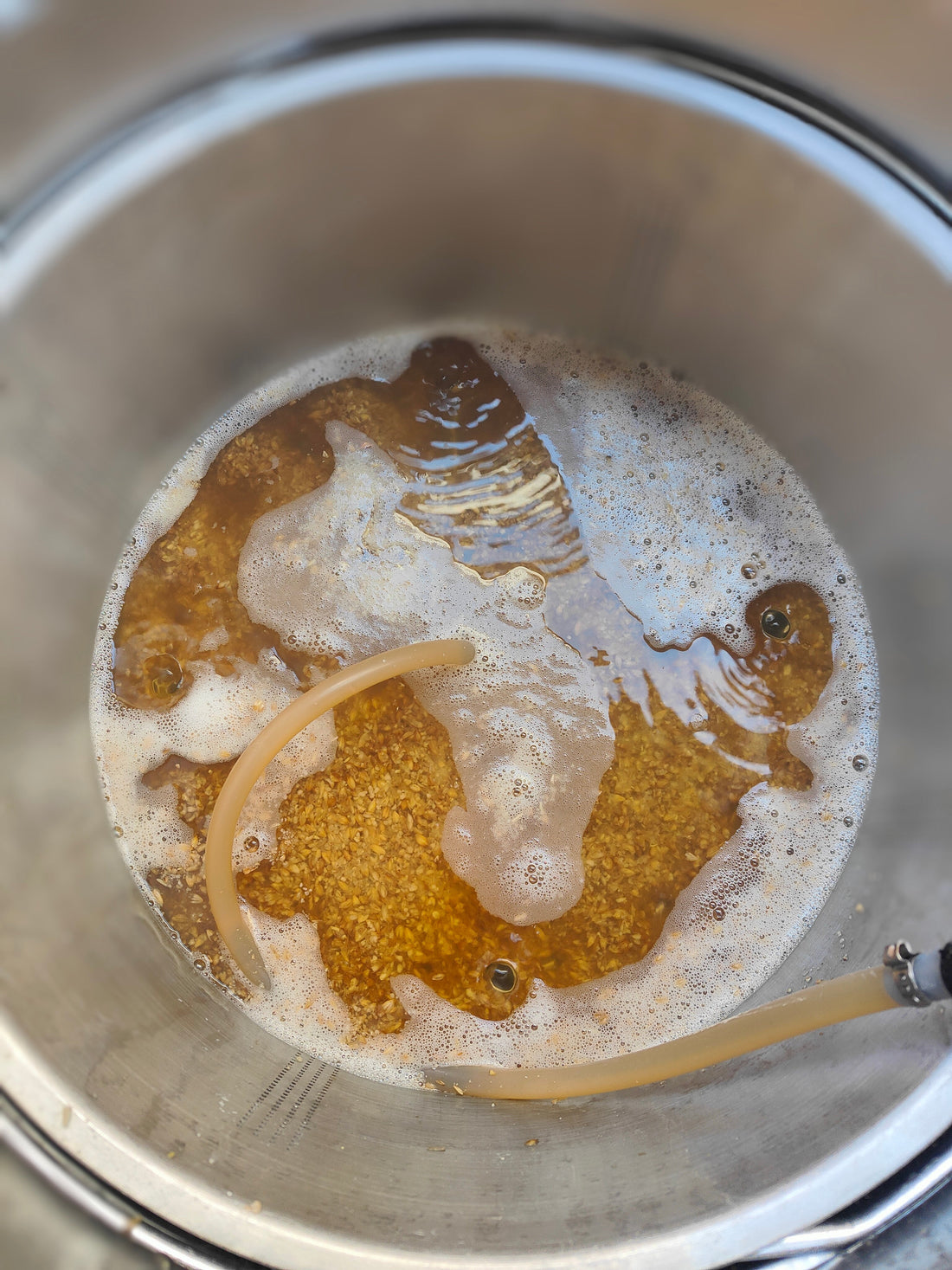
A Brief Introduction To Brewing
Share
Why start brewing?
For me it’s just a great hobby. Whether it’s the urge to recreate your favourite ale, wow your friends with the latest self designed craft beer or for indulging yourself with lots of tech and shiny stainless steel. Home brewing is very much an inclusive hobby.
The reality of brewing top quality beer especially as an all grain brewer is possible and so very satisfying.
Extract Beer Kits
The easiest way to get started is extract brewing. The kit will consist of tins or packets of malt extract, some yeast and hops pellets as required. The steps are simple; use a mixture of boiling water to loosen the malt extract then add cold water to reach the required volume and temperature. Sprinkle in your chosen yeast, seal the fermenter with its airlock and place somewhere with a steady temperature. Just a couple weeks later the yeast has worked its magic and you’re ready to bottle the alcoholic beverage of your choice. Perfect for those with limited space, time and sometimes budget.
Equipment
Equipment ranges from something as simple and cost effective as a fermenting bucket or carboy.
I would recommend a bucket with a tap to make life easier. Other essentials include a mixing paddle, siphon and a bottling wand to help you bottle your beer once it's ready. A trial jar and hydrometer to check the original and final gravities so you can then work out the strength (abv) of your beer. Finally, some cleaning and sanitisation products, bottles, caps and a capper.
Part Grain Kits
Another option for brewers is to use a part grain kit. This consists of a small amount of grain that is mashed with water to a temperature of around 65 degrees, giving the brewer some wort. This is then added to the extract provided to complete your wort for fermenting. The equipment for part grain is almost the same as for the extract kit but with the addition of a stock pot of the relevant size to mash your grain.
All Grain Brewing
Finally we have all grain brewing. This is much more time consuming depending on preparation, mash, sparge, boil and cleaning up time; 5 hours would be a good average time.
This however is the largest step up in your brewing and from my experience, the step up in quality and enjoyment as a home brewer was immeasurable. It’s just like running a miniature brewery as the processes are comparable with a commercial set up. The equipment you can use range from a boil in a bag, an all in one brew equipment, or a 3 pot system with mash tun, boil kettle and hot liquor tank. There is even a home made system that uses picnic coolers. Everyone will have their own preference and budget and all these systems are more than capable of producing top quality homebrew.
I personally have had a couple of all-in-one systems; a Brewzilla 3.1 was my first and then I upgraded to a Grainfather G40, both very capable systems at 2 different price points. I love my G40 and the integration with the Grainfather App, but others may prefer a more cost effective or more hands on approach and that’s the beauty of brewing. We make what we want our way.
Be warned though brewing may draw you right in. The more you brew the more you’ll find yourself wanting the next level of equipment, stainless steel conical fermenters, pressure ferments, kegging your beer, fermentation chambers and kegerators to serve your own brew from, to be honest - it’s endless.
It’s a great hobby with scope to fettle and experiment to your heart's content.
The ingredients and equipment for homebrewers now is truly amazing and allows us homebrewers to experiment on a level not even commercial breweries can!
Cheers and happy brewing, Steve

